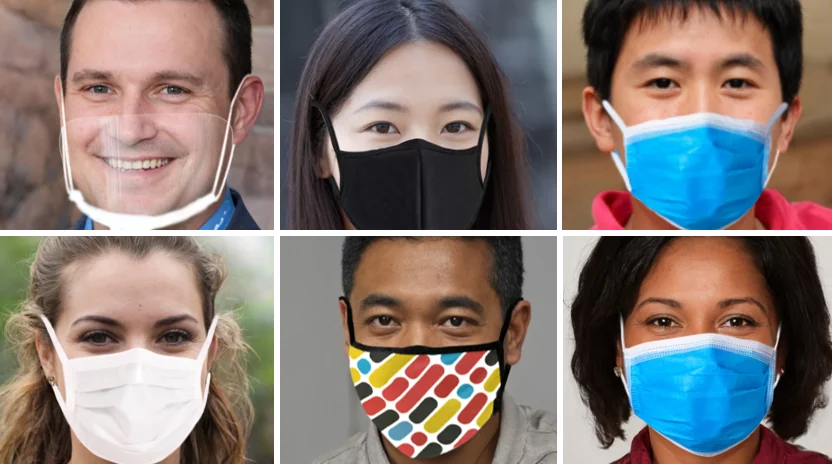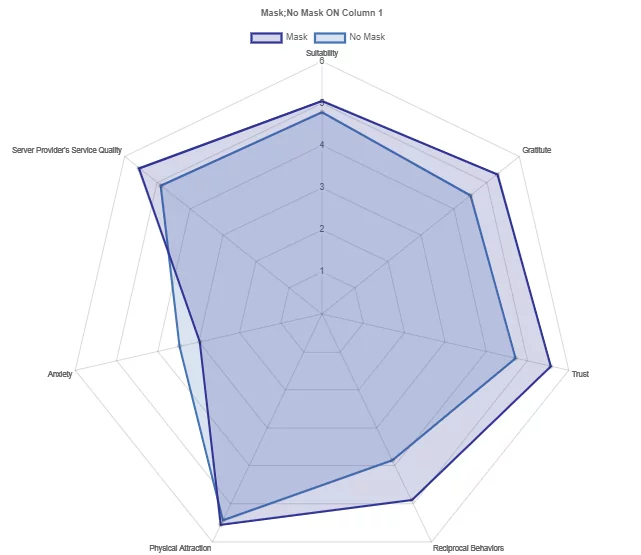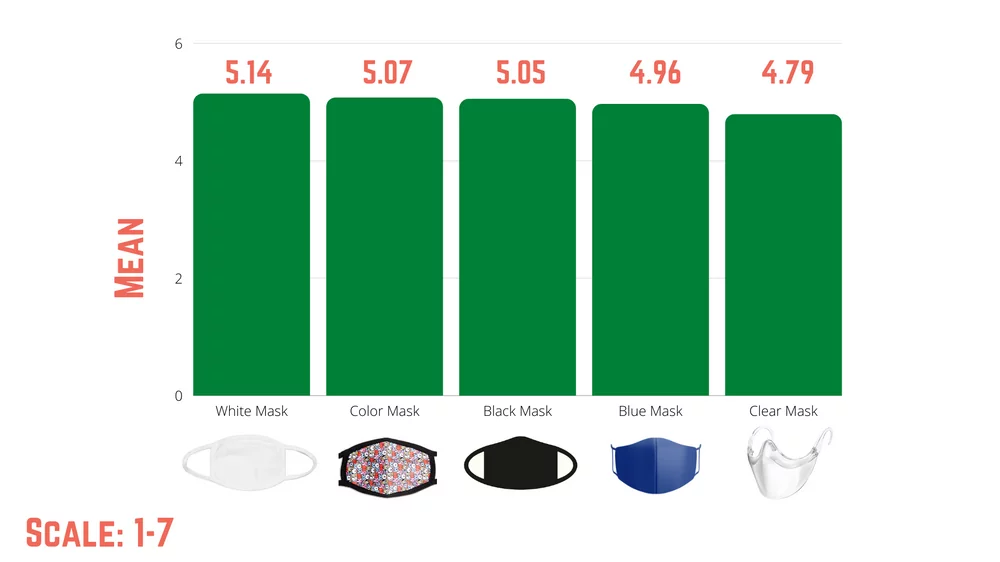As COVID-19 spreads person to person through respiratory droplets, U.S. Center for Disease Control and Prevention recommends that everyone wears a mask when they are around other people (CDC, 2020). As such, many companies have enforced mask wearing policy for their customers and employees (Markowitz, 2020). As a result, many people have started to use masks in the United States. It is noteworthy that while it is new to American culture, mask wearing is common in some Asian cultures (Beglin, 2020).

In terms of academic research, the current body of literature lacks an investigation on how wearing a mask by hotel and restaurant employees can impact guests’ perceptions, emotions and behavior. Using a sample of 1,800 Americans, the University of South Florida’s M3 Center for Hospitality Technology and Innovation conducted an experimental research study to better understand this customer perceptions and behavior related to mask wearing in a hotel or restaurant.
The Study
In this study, respondents visited a restaurant or hotel as a guest, doing so virtually. Each respondent was shown a random picture of a service employee with or without a mask. The pictures of the servers were obtained from thispersondoesnotexist.com, a website that uses artificial intelligence to generate realistic images of human faces. USF researchers included photos of men and women across three races (Black, white and Asian) in the photo pool. Each picture was manipulated to show the employee wearing a mask in one five color schemes: white, black, blue, colorful, clear. A control group was also included with servers wearing no mask.
After showing respondents to the randomly chosen picture, respondents were asked about their impressions of the server and subsequent perceptions, emotions and behavior. First impression theory states that most people form their opinions about a person within a few seconds after they see them (Hognas, 2015; Shao, 2017). Even though people know that first impressions should not be enough to make a judgment about another person, most people do it anyway (Ludden, 2017).
Results
A total of 1,812 Americans responded to the survey, of which 913 received the hotel scenario; 899 received the restaurant scenario. As shown in Figure 2, all the variables were rated higher with an exception of physical attractiveness. On a 7-point scale, suitability of the server (with mask) was rated as 5.06.Suitability was rated 4.79 for servers wearing no masks. Similarly, gratitude was rated as 5.32 for servers with mask and 4.52 for server with no mask; service quality was rated 5.55 for server with mask, and 4.59 for server with no mask; trust was rated as 5.57 for server wearing masks and 4.71 for servers without masks; reciprocal behaviors was rated as 4.91 for servers wearing masks and 3.85 for servers without masks. Interestingly, respondents anxiety levels were significantly reduced when the viewed servers wearing masks.
The only variable with non-significant difference was physical attraction. It was rated 5.55 for servers with a mask and 5.43 for servers without a mask. Results show that customers perceive higher service quality in a restaurant or hotel if employees wear masks, regardless of the color or type of mask. Results also show that wearing a mask does not make the service person less attractive or more attractive. No significant differences were found between how male and female respondents perceived the masks.

What color mask is better?
USF researchers also analyzed the data to understand if there is any difference in respondents’ perceptions based on the different types/colors of mask used by servers. Results show for all the categories, a white mask is perceived the highest, followed by a colorful mask, black mask, blue mask and clear mask (See Figure 3). A possible explanation for this might be the usual association of white as the color of cleanliness and sanitation. Based on the results of this study, scholars recommend hotel and restaurant employees use a white mask.

Conclusions
The University of South Florida’s M3 Center study with 1,800 Americans showed that hotels and restaurants should enforce mask wearing policy for service employees. The results showed that guests perceive higher service quality, show trust, gratitude, and reciprocal behaviors in establishments where servers wear masks. Interestingly, guests get anxious when they see a service person without a mask. Wearing a mask (or opting against one) made no difference on guests’ perceived attractiveness of the servers.
nResults also showed a white mask is perceived the highest, followed by a colorful mask and a black mask. Clear masks were perceived the lowest of all mask types. Researchers recommend that hotels and restaurants opt for white masks, if possible. While many service establishments use clear masks as they believe they show the expressions of the service person, this study shows that customers are not likely to make that same connection and the masks were perceived as significantly less valuable than others.
Authors: Cihan Cobanoglu, Faizan Ali, Luana Nanu, Khuraman Shahtakhtinskaya, Imran Rahman